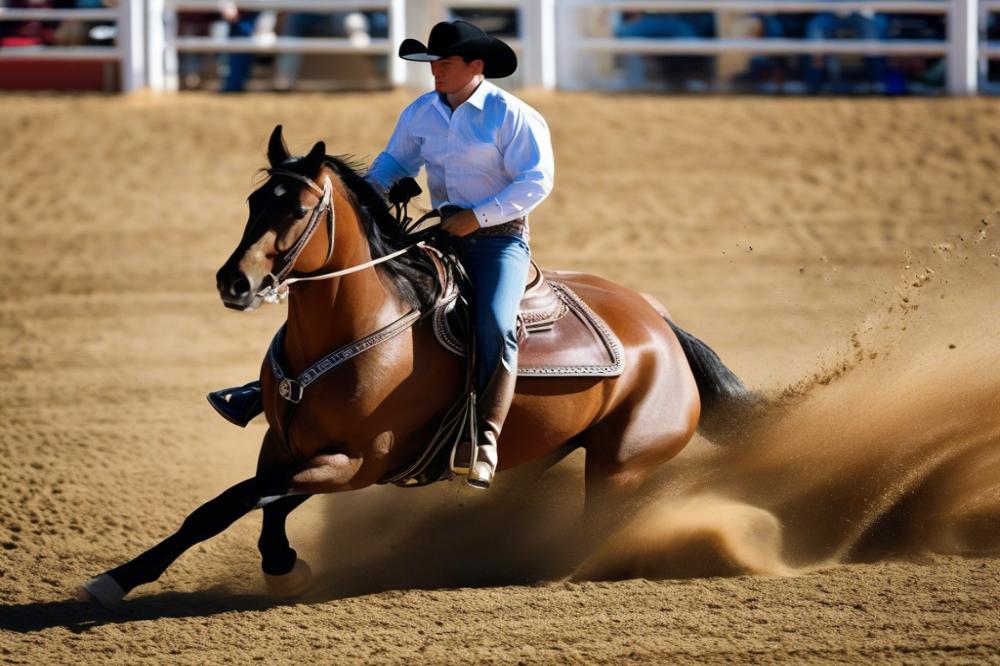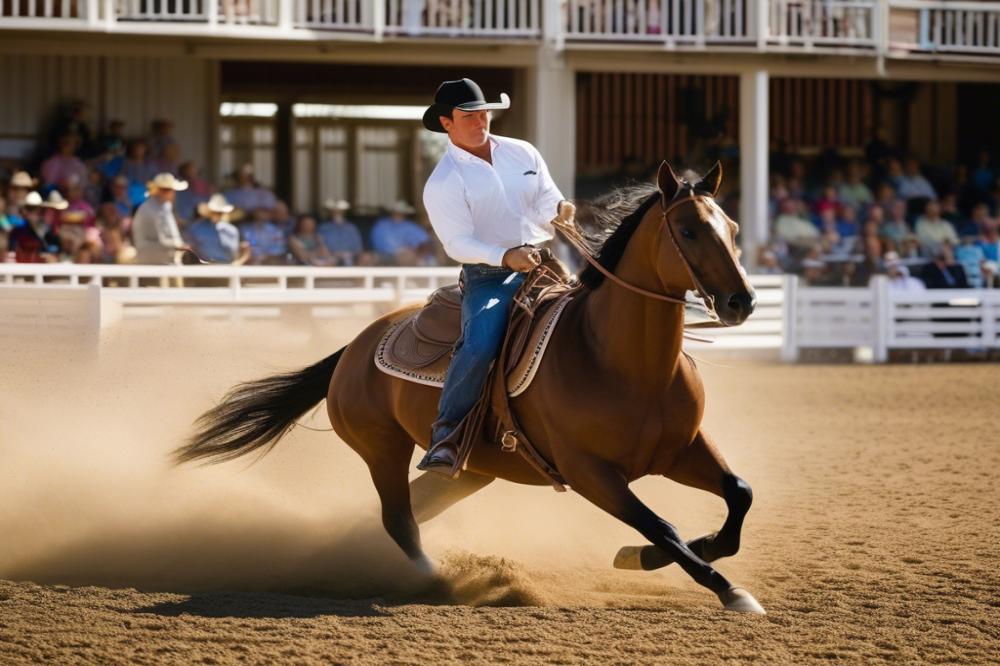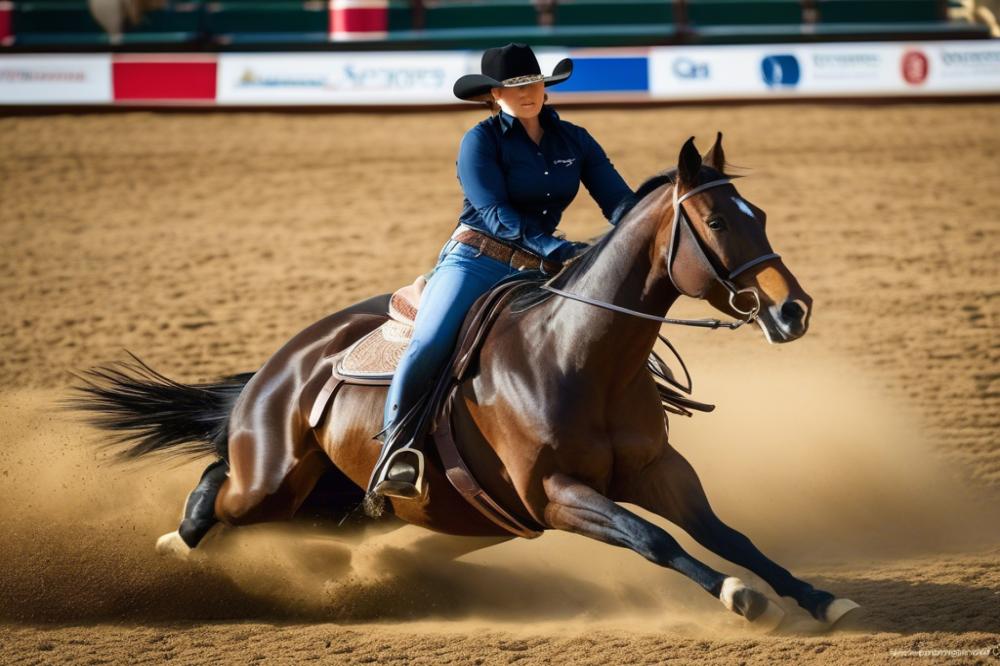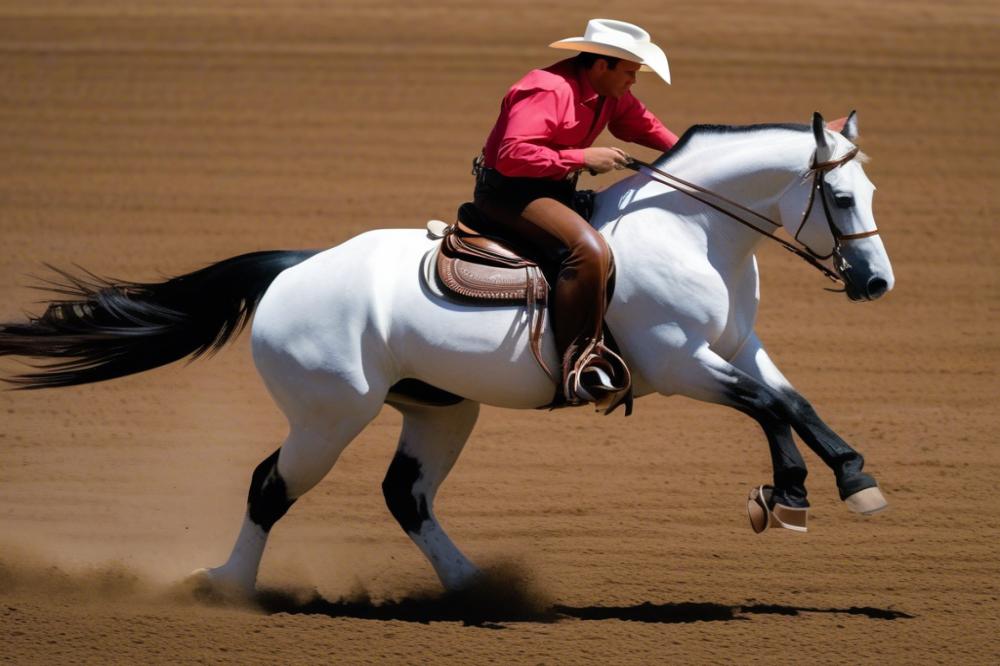Understanding Quarter Horse Reining
Quarter Horse Reining is an exciting discipline that showcases the athleticism of these incredible horses. Riders navigate their mounts through a series of precise maneuvers, proving their skill and the horse’s training. This sport highlights the bond between horse and rider, making it truly is a captivating display of teamwork.
Proper riding techniques play an essential role in achieving success in Reining Competitions. Mastering the basics of balance, control, and communication can greatly influence performance. A rider’s ability to guide their horse through intricate patterns requires practice and understanding. Each movement must be executed with accuracy and confidence, as even the slightest error can impact the final score.
Training the horse is equally vital. An understanding of the horse’s behavior and capabilities helps trainers develop a tailored approach. Over time, developing a routine can enhance the horse’s natural skills. Effective training promotes trust between the horse and rider, ultimately leading to better performances in the arena.
This article aims to provide essential insights on riding a Quarter Horse for reining events. By exploring riding techniques and training tips, readers can improve both their skills and their horse’s performance. Whether new to the sport or seeking to refine their abilities, this guide is designed to help riders succeed.
Understanding Quarter Horse Reining

Definition of Quarter Horse Reining
Reining is a western riding discipline that showcases a horse’s athletic ability and agility. Riders guide their horses through a series of precise maneuvers. These include spins, sliding stops, and circles. Judges evaluate each run based on performance and neatness. The aim is to demonstrate the partnership between the rider and the horse.
Characteristics of Quarter Horses Suited for Reining
Quarter Horses are particularly prized in this discipline. They possess a compact build, which aids in agility and speed. Muscular bodies provide strength, allowing for easier execution of maneuvers. Quick reflexes play a significant role in their performance. These horses often have calm dispositions, making them suitable for competition. Their ability to focus is essential when navigating a challenging course.
Overview of Western Riding Style
Western riding has unique traits that distinguish it from other styles. A specific saddle is used, designed for comfort and control. Riders typically hold the reins in one hand, allowing for subtle signals. This method encourages a good communication line between horse and rider. Western riding emphasizes smoothness and precision in every movement. Dress attire often includes a cowboy hat and boots, reflecting a strong cultural heritage. Understanding these elements can enhance both training and competition experiences.
Basic Riding Techniques

Proper posture and balance are crucial when riding a horse. You should sit upright in the saddle, keeping your shoulders back and down. This position helps with stability. Your legs need to hang naturally, with your heels slightly lower than your toes. Maintaining a straight line from your shoulder to your heel will help you avoid unnecessary movement.
Using aids effectively helps communicate with your horse. Aids are signals that a rider gives through their body. Your hands, legs, and even your voice work together as aids. For example, squeezing with your legs can encourage the horse to move forward. A soft pull on the reins asks the horse to slow down or stop. Understand the difference between subtle and strong signals; they both have their uses.
Rein management is key in controlling your horse. Hold the reins firmly but gently. You want to feel connected to your horse without being overly tense. Practicing light touches can show your horse how to respond without confusion. When using leg pressure, remember to apply it consistently. For instance, if you want your horse to turn, gently press down with your leg on the side you want to move towards. This clear communication helps foster a better partnership.
Mastering these basic techniques can greatly improve your riding skills. As you become more comfortable, you will develop a natural rhythm with your horse. Equally important is being aware of your surroundings; this helps you anticipate movements. Practice is essential. The more you ride, the better your connection with your Quarter Horse will grow. Enjoy the process of learning; it is a journey worth taking.
Horse Training Essentials

Building a solid foundation with groundwork is crucial for any reining horse. This initial stage lays the groundwork for effective communication between the rider and the horse. Groundwork involves various exercises that enhance trust and respect. Horses learn to respond to the handler’s body language and voice commands. Simple tasks, such as leading and stopping, help establish this vital connection.
Another key area involves spook training for reining horses. Even the most composed horses can become startled by unexpected sounds or movements. Focusing on spook training helps them develop confidence. Introduce them to common distractions in a controlled manner. Gradually increase the level of challenge without overwhelming the horse. This process builds their ability to remain calm during competitions.
Responsiveness to cues and commands is essential for success in reining. The rider must create a strong bond of communication with the horse. Start with basic commands, using clear signals. Horses need to know what is expected of them. As they become more proficient, gradually incorporate more advanced maneuvers. Consistent practice and positive reinforcement can yield impressive results. Trust between horse and rider is critical for executing complex patterns during competition.
Advanced Skills for Reining
Learning and Executing Lead Changes
Mastering lead changes is essential for reining. These changes allow a horse to switch its leading leg while cantering, which is crucial for maintaining balance and speed. Begin practicing this skill during your warm-up sessions. A simple way to start is by focusing on cues. Use subtle pressure from your legs or changes in your body position. This lets the horse know a lead change is coming. Practice this exercise in both directions. As you gain confidence, work on making the changes smoother and more precise. Remember, communication with your horse is key.
Understanding and Practicing Patterns
Familiarity with patterns is vital in competitions. Each routine has specific maneuvers that must be executed perfectly. Spend time learning the required patterns for your events. Find a quiet place in the arena to practice. Break down the patterns into smaller components. Focus on mastering each part before trying the whole routine. Then, gradually increase the complexity. Timing is important, so work on getting your horse to respond without hesitation. Regular practice of these sequences will build muscle memory for both of you.
Techniques for Spins and Stops
Spins and stops are show-stopping elements of reining. A solid spin consists of controlled, fast rotations on the hindquarters. Start by teaching your horse to pivot on its hind legs. Use a gentle pull on the reins and direct your horse’s energy with your legs. Practice this slowly at first, ensuring precision. Gradually increase the speed as your horse learns. Stopping is equally important. Begin with slow, deliberate stops. Apply even pressure with your reins and sit deep in the saddle. As your horse gains confidence, focus on achieving quick, powerful stops. Both techniques require practice and patience, but the results are worth it.
Competition Tips and Scoring
Overview of Judges’ Scoring Criteria
Judges look for specific skills when scoring riders in reining events. Each maneuver is rated based on precision, speed, and style. They pay attention to the transitions between movements. Points can be added for neatness and fluidity. Excessive mistakes can lead to point deductions. An overall impression is crucial, so maintaining a confident demeanor is key. Each judge will have their scoring nuances, but consistency is often rewarded.
Tips for Making a Positive Impression in Competition
Appearing polished can greatly influence how you are assessed. Make sure that both you and your mount look well-groomed. It’s important to wear appropriate attire that reflects your seriousness. Showcase your horse’s abilities by practicing movements beforehand. Strong communication with your horse will create a bond that judges can see. Remember to ride with purpose and determination. Small touches, like a relaxed posture, can enhance your performance.
Strategies for Handling Nerves and Staying Focused
Feeling nervous is common, especially before a competition. Breathing exercises can help. Take a few deep breaths to calm your mind. Visualizing a successful ride might also ease anxiety. Setting small goals during your performance can keep you grounded. Focus on each movement instead of the outcome. Remain attentive to your horse’s signals. Concentration on your ride can lead to a smoother performance. Staying in the moment is crucial to achieving the best results.
Saddle Fitting and Gear Selection
Proper saddle fitting plays a vital role in performance. A well-fitted saddle allows the rider to maintain balance and control during the challenges of reining. If the saddle is too tight or too loose, it can cause discomfort for the horse. Pain or restriction can lead to poor performance and lack of responsiveness.
When selecting tack, several factors must be considered. A good bit is essential for control, and it should suit both the rider and the horse. Split reins are often preferred for their versatility. Additionally, a sturdy saddle pad is necessary to protect the horse’s back and keep the saddle in place. Materials should be chosen carefully for durability and comfort.
Gear affects movement significantly. A tight saddle can limit a horse’s range of motion, hindering fluid movement during spins and stops. Conversely, well-chosen equipment promotes a natural stride. Rider comfort is also paramount. An uncomfortable saddle or tack can lead to distraction, making it difficult to communicate effectively with the horse.
Choosing the right set-up takes time. Riders should test different saddles and bits to find the best fit. Consulting with an experienced trainer or saddle fitter can provide valuable insights. A good combination enhances both technique and confidence in the arena.
Wrapping Up Your Journey in Reining
Riding a Quarter Horse in Reining Competitions requires focus and skill. You must understand the unique nature of these horses and how they respond to your commands. Developing proper riding techniques is essential for success in the arena. Emphasize rhythm, control, and precision in every maneuver. The correct approach will help your horse excel and make the experience enjoyable for both of you.
Practice plays a vital role in your development. Dedicate time to improve your skills. Regular training sessions will build your confidence and strengthen your bond with your horse. horse training does not happen overnight; patience is key. Celebrate small victories along the way. They will motivate you to keep moving forward.
Ultimately, remember to enjoy the journey. Competitions should be fun and fulfilling, not just about winning. Embrace the challenges and learn from every ride. Every experience contributes to your growth as a rider. Find joy in the process, and your passion for reining will flourish.



